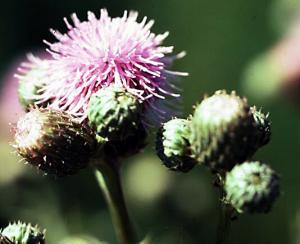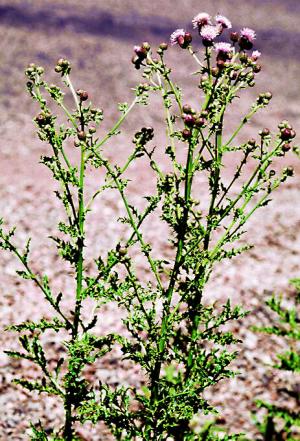CONTENTS
Biology and Management
Registered Herbicides
[Return to weed
Identification]
[Return to Weed
Management]
[Home] |
|

|

|
| Canada Thistle Rosette
Stage |
Canada Thistle Flowers |

|
Canada thistle is a colony forming
perennial weed that reproduces by seeds and root buds on spreading lateral roots. Mature
plants are woody with grooved stems growing 1 to 4 feet high. Mature plants have a
deep and extensive root system growing down to a meter under the soil surface. Canada
thistle reproduces asexually from rhizamatous roots (any part of the root system may give
rise to new plants) or sexually from wind-blown seed, which germinates in the late spring
or early fall. Seeds may retain viability 4+ years in the soil. New seedlings develop into
rosettes. Purple flowers are produced in July - August. Canada thistle is a problem
in perennial and annual crops, rangeland, and minimum tillage systems, such as peppermint. |
| Mature Canada Thistle
Plant |
Description |
This section contains information on identification of
the different life stages of Canada thistle. Select Biology and Management from the
Contents Menu for more information on the biology and management, or select Registered
Herbicides for the herbicides that are registered to control this weed in mint. |



